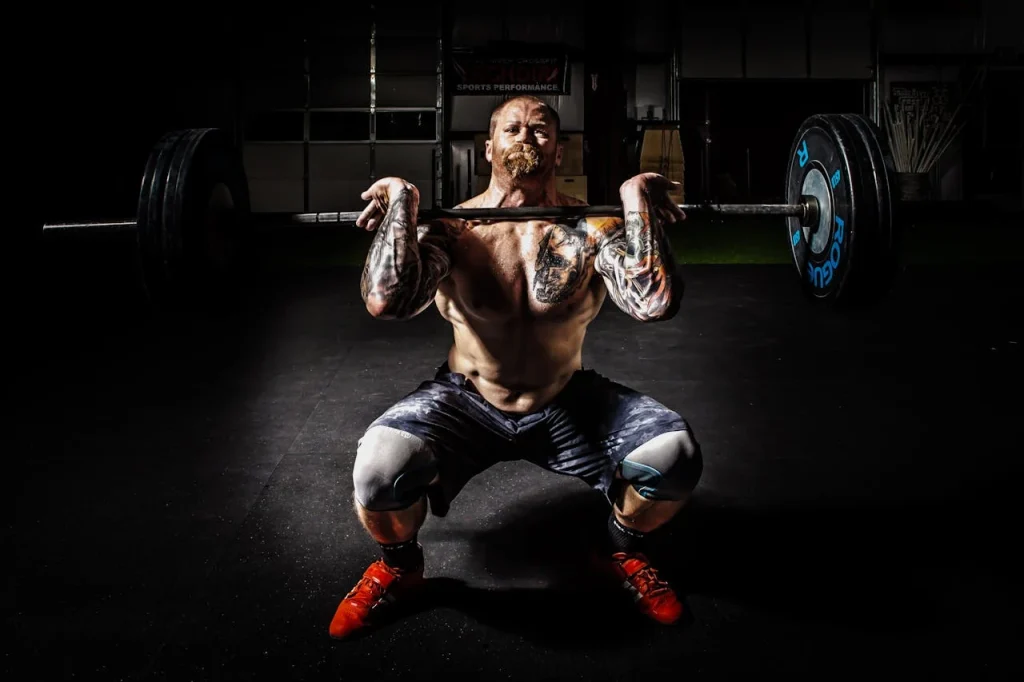Last Updated on March 20, 2025
Introduction
Weightlifting is one of the most effective ways to build muscle, increase strength, and improve overall health. Whether you want to gain muscle, lose weight, or boost athletic performance, weightlifting can be a game-changer. However, for beginners, stepping into the gym for the first time can feel overwhelming. With so many exercises, techniques, and equipment to choose from, knowing where to start can be challenging.
This guide is designed to take the guesswork out of weightlifting for beginners. We’ll cover everything from understanding the benefits, learning proper techniques, and creating an effective workout plan to nutrition tips, recovery, injury prevention, and common mistakes to avoid.
Understanding the Science of Weightlifting
Weightlifting revolves around progressive overload, where muscles adapt and grow by gradually increasing the resistance over time. Strength training activates muscle fibers, causing tiny tears that, when repaired, lead to muscle growth. This adaptation process is fueled by nutrition, rest, and proper training techniques.
How Muscles Grow (Hypertrophy)
- Mechanical Tension: Lifting progressively heavier weights creates stress on muscles, leading to growth.
- Muscle Damage: Small microtears from lifting are repaired, making muscles stronger.
- Metabolic Stress: The burn or pump you feel during a workout increases blood flow, boosting muscle size.
Benefits of Weightlifting
Physical Benefits
- Increases Muscle Strength and Size – Resistance training helps develop stronger, more defined muscles.
- Boosts Metabolism – Muscle burns more calories than fat, even at rest, helping with weight management.
- Improves Bone Density – Lifting weights strengthens bones, reducing the risk of osteoporosis.
- Supports Joint Health – Strengthening muscles protects joints, reducing injury risks.
Mental and Emotional Benefits
- Enhances Mental Health – Weightlifting releases endorphins, reducing stress, anxiety, and depression.
- Improves Confidence – Seeing progress builds self-esteem and motivation.
- Enhances Cognitive Function – Resistance training has been linked to better memory and focus.
Types of Weightlifting
- Bodybuilding – Focuses on muscle size and definition.
- Powerlifting – Centers around maximal strength in three key lifts: squat, bench press, and deadlift.
- Olympic Weightlifting – Involves complex, explosive movements like the snatch and clean & jerk.
- Functional Training – Enhances overall movement, flexibility, and endurance.
- CrossFit – A mix of strength and high-intensity conditioning.
Essential Equipment for Beginners
Starting with the right equipment can make a big difference in your progress:
- Dumbbells – Great for a wide range of exercises and improving balance.
- Barbells – Ideal for compound lifts like squats, deadlifts, and bench presses.
- Weight Plates – Used with barbells to increase resistance.
- Resistance Bands – Perfect for warm-ups and muscle activation.
- Kettlebells – Excellent for functional and full-body workouts.
- Weightlifting Bench – Helps with exercises like the bench press and seated shoulder press.
- Lifting Belt – Provides core and lower back support for heavy lifts.
Beginner-Friendly Weightlifting Exercises
Mastering basic exercises with proper form is crucial. Here are some beginner-friendly weightlifting exercises categorized by muscle groups:
Upper Body
- Bench Press – Strengthens chest, shoulders, and triceps.
- Overhead Shoulder Press – Works shoulders and triceps.
- Bent-over Rows – Targets back and biceps.
- Bicep Curls – Focuses on arm muscles.
Lower Body
- Squats – Builds leg strength and engages the core.
- Deadlifts – Enhances hamstrings, glutes, and lower back strength.
- Lunges – Improves leg endurance and balance.
- Calf Raises – Strengthens the calves.
Core Strengthening
- Planks – Engages core muscles and improves stability.
- Russian Twists – Strengthens obliques and improves rotational strength.
- Hanging Leg Raises – Works lower abs effectively.
How to Create a Beginner Weightlifting Routine
A structured plan is key to making progress. Here’s a simple 3-day per week program:
Day 1: Upper Body
- Bench Press: 3 sets of 8-12 reps
- Overhead Shoulder Press: 3 sets of 8-12 reps
- Bent-over Rows: 3 sets of 10 reps
- Bicep Curls: 3 sets of 12 reps
Day 2: Lower Body
- Squats: 3 sets of 8 reps
- Deadlifts: 3 sets of 8 reps
- Lunges: 3 sets of 10 reps per leg
- Calf Raises: 3 sets of 12 reps
Day 3: Full Body & Core
- Deadlifts: 3 sets of 8 reps
- Planks: 3 sets of 30-60 seconds
- Russian Twists: 3 sets of 20 reps
- Hanging Leg Raises: 3 sets of 10 reps
Nutrition for Weightlifting Success
Proper nutrition fuels muscle growth and recovery. Follow these key principles:
- Protein Intake – Aim for 1.2-2.0g of protein per kg of body weight.
- Healthy Carbs – Consume complex carbohydrates like oats, brown rice, and sweet potatoes for sustained energy.
- Healthy Fats – Include sources like avocados, nuts, and olive oil.
- Hydration – Drink plenty of water to aid muscle recovery.
- Meal Timing – Eat protein-rich meals before and after workouts to support muscle repair.
Recovery and Injury Prevention
Why Recovery Matters
Muscles grow and repair during rest. Skipping recovery leads to overtraining, injury, and stalled progress.
Best Recovery Practices
- Get Enough Sleep – Aim for 7-9 hours per night.
- Active Recovery – Light stretching and yoga enhance flexibility and circulation.
- Foam Rolling – Reduces muscle soreness and tightness.
- Hydration & Nutrition – Proper hydration aids muscle recovery.
Common Weightlifting Mistakes to Avoid
- Skipping Warm-Ups – Increases the risk of injury; always warm up before lifting.
- Using Poor Form – Leads to muscle imbalances and injuries; prioritize proper technique.
- Lifting Too Heavy Too Soon – Progress gradually to avoid strain or injury.
- Ignoring Recovery – Muscles grow during rest; get enough sleep and take rest days.
- Not Tracking Progress – Keep a workout journal or use fitness apps to monitor improvements.
Conclusion
Starting your weightlifting journey doesn’t have to be intimidating. With the right mindset, a solid plan, and consistency, you can build strength, improve your health, and reach your fitness goals. Follow this guide, focus on proper technique, and gradually progress at your own pace. Over time, you’ll gain confidence, lift heavier weights, and experience the numerous benefits of weightlifting.








